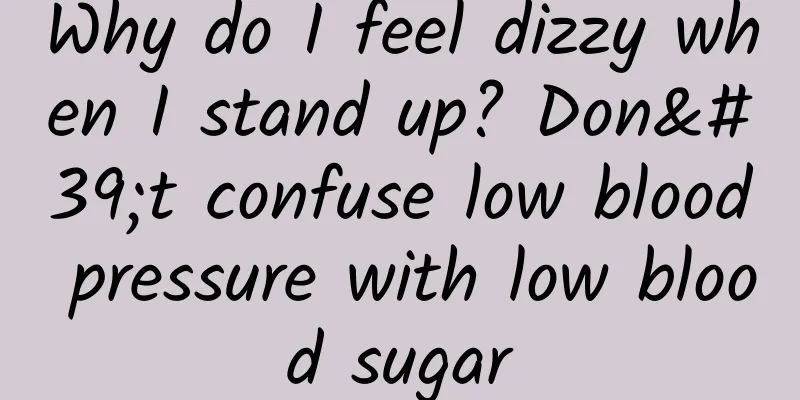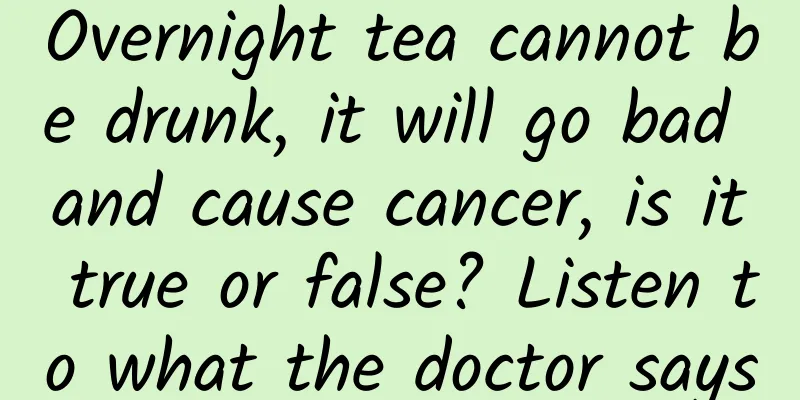Why do I feel dizzy when I stand up? Don't confuse low blood pressure with low blood sugar

|
What is orthostatic hypotension Orthostatic hypotension, also known as postural hypotension, is a common cause of syncope; about 20% of the elderly experience orthostatic hypotension, and it is more common in patients with other diseases. However, its onset is insidious and is often missed or misdiagnosed. Many falls in the elderly may be due to unrecognized orthostatic hypotension. When the human body stands, due to the effect of gravity, blood gathers in the lower limbs and visceral blood circulation, the amount of venous blood returning to the heart decreases, cardiac output decreases, and the pressure receptors in the carotid sinus and aortic arch trigger sympathetic nerve excitement and reduce vagal nerve activity, increasing peripheral circulation resistance, venous return and cardiac output, thereby keeping blood pressure stable. If this reflex weakens, postural hypotension and cerebral hypoperfusion will occur. The clinical manifestations of orthostatic hypotension vary. Mild cases usually have no obvious symptoms, while severe cases may have a series of ischemic and hypoxic symptoms of insufficient cerebral perfusion when the body position changes (dizziness, fatigue, confusion, blackouts, unsteady standing and even falling). In what situations does orthostatic hypotension occur? There are many causes of orthostatic hypotension, generally including: Diseases that affect the autonomic nervous system: diabetes, Parkinson's disease, and some other neurodegenerative diseases. Intravascular hypovolemia: heavy bleeding, profuse sweating, vomiting and diarrhea, use of diuretics. Elderly people: Elderly people are more likely to experience recurrent orthostatic hypotension, which may be related to the reduced sensitivity of pressure receptors on the blood vessel walls. Specific drug effects: alcohol, antidepressants, some drugs with vasodilator effect. Patients with other diseases are also more likely to have orthostatic hypotension, such as heart failure and adrenal insufficiency. What are the risks of low blood pressure? 1. More likely to cause stroke When blood pressure is too low and the heart pumps less blood, there is not enough power to push the blood forward. This is like irrigating crops without water. It will cause insufficient blood perfusion throughout the body, especially insufficient blood supply to the heart and brain, which will increase the possibility of people suffering from cardiovascular and cerebrovascular diseases. In addition, the slow blood flow caused by low blood pressure will also promote the formation of blood clots, especially for some people who already have thick blood and stenosis of cerebral blood vessels, who have a higher risk of ischemic stroke. 2. High risk of dementia A study found that people whose systolic blood pressure changes dramatically due to changes in body position have a nearly 40% increased risk of dementia compared with the general population. Researchers say this may be because orthostatic hypotension deprives the brain of oxygen and damages brain tissue. 3. High risk of depression Patients with low blood pressure are generally in a low mood, have no passion, are depressed and don’t want to talk to others. Over time, they are more likely to suffer from depression. And related research shows that compared with people with healthy or higher levels, patients with blood pressure below normal are 30% more likely to be depressed. How to relieve orthostatic hypotension 1. Habits that can be changed in daily life Get up and move slowly. Especially for the elderly, when they get up early or go to the toilet, their tolerance for upright posture is the worst. Adhering to the habit of getting up and moving slowly can greatly avoid the risk of falling. Raise the head of the bed 10-20 degrees when sleeping. This can reduce renal perfusion, reduce urine output at night, and maintain adequate blood volume. Avoid constipation and forceful coughing. Increased abdominal pressure during constipation or forceful coughing can easily induce erroneous perception of pressure receptors and cause reflex hypotension. 2. Eating habits that need attention Drink more water. Increasing water intake can increase the blood volume in the blood vessels and help the blood vessels maintain a certain tension. It is generally recommended to drink 1500~3000mL of water per day, especially drinking a glass of water in the morning, when exercising and when eating. Avoid overeating and drinking alcohol, as alcohol has a strong vasodilating effect. 3. Methods to relieve orthostatic hypotension When standing, you can cross your legs to keep them tight. When standing up from a squat, tightening your buttocks and abdominal muscles can also reduce symptoms associated with low blood pressure. 4. If you suddenly feel dizzy or panic If hypotension occurs suddenly and symptoms such as dizziness and palpitations occur, it is recommended that you sit down or squat immediately and drink about 300 to 500 mL of fluid. Wait until your blood pressure returns to normal in about 20 minutes before resuming activities. |
<<: How much do surgical patients know about "pressure injuries"?
>>: Is eating waxed apple harmful to health? The truth is →
Recommend
Postbiotics: An advanced version of probiotics, the future star of intestinal health
This is the 5268th article of Da Yi Xiao Hu We ar...
Is it good for a woman to have a mole on her left cheek?
Although most girls don’t want to have moles on t...
How to prevent excessive vaginal bleeding
I believe many female friends have been troubled ...
CMR: India's home healthcare market to reach $6.2 billion by 2020
199IT original compilation According to a new rep...
What causes women's lower body odor?
Female friends all know that a woman's vulva ...
Clinical manifestations, diagnostic basis and treatment principles of chronic pelvic inflammatory disease
Any disease requires certain methods to be treate...
How long should I rest after aborting my pregnancy at 40 days?
Abortion is a familiar topic for women and is som...
How to apply glass glue to make it beautiful and good-looking? What to use to scrape after applying glass glue
Glass glue is a common household adhesive, compos...
What are the treatments for nasal cysts?
Many people think that problems with the nose are...
How to find the acupuncture points for breast enhancement
Girls all hope to have full and firm breasts, but...
What causes uterine hemorrhage?
Uterine hemorrhage is likely to cause shock in pr...
What kind of purple rice is good? How to make purple rice bread
Purple rice is a kind of food that we use widely ...
Will uterine diverticulum become malignant if not treated?
Uterine diverticulum can usually only be discover...
Why is there pain in the lower right side of the chest?
The chest is the best description of the space wh...
How to remove the air in the tempered glass of mobile phone? What to do if there is always a corner of the tempered glass that is not firmly attached?
Adults cannot live without mobile phones almost e...









